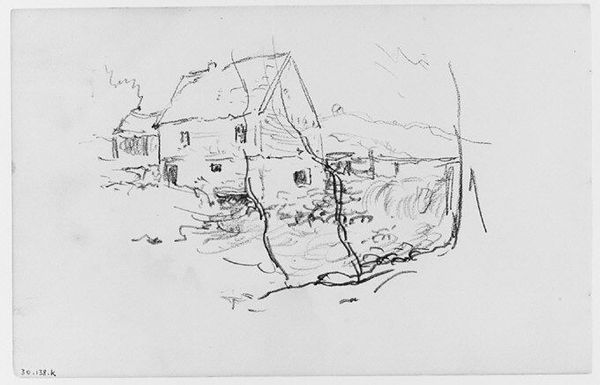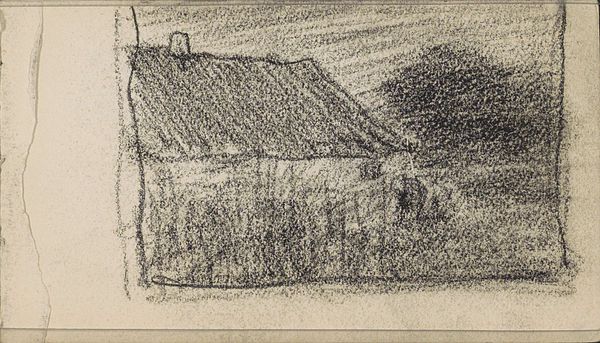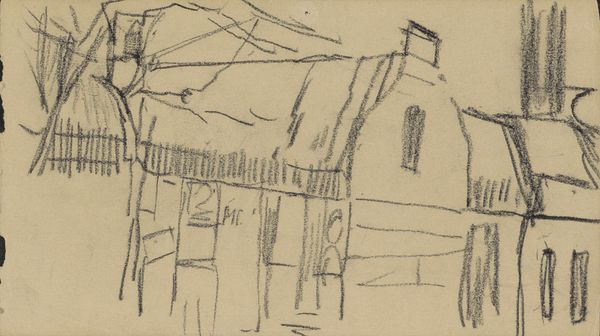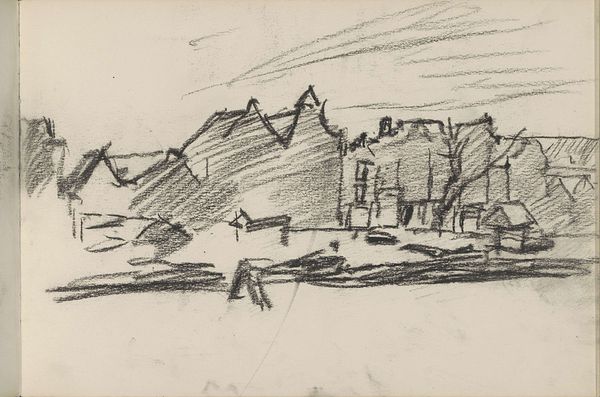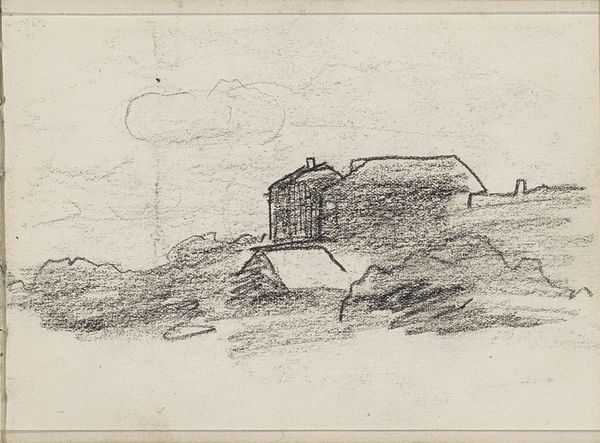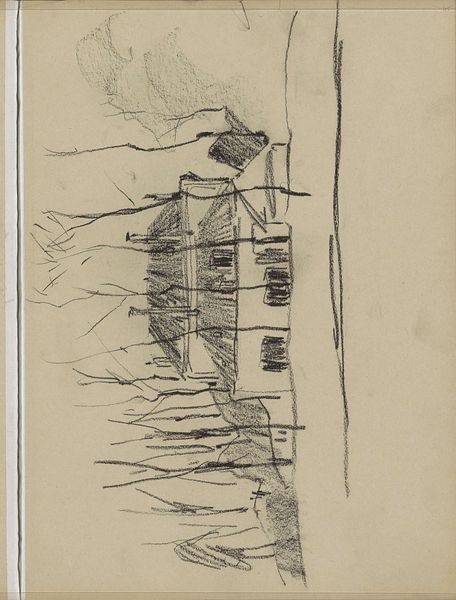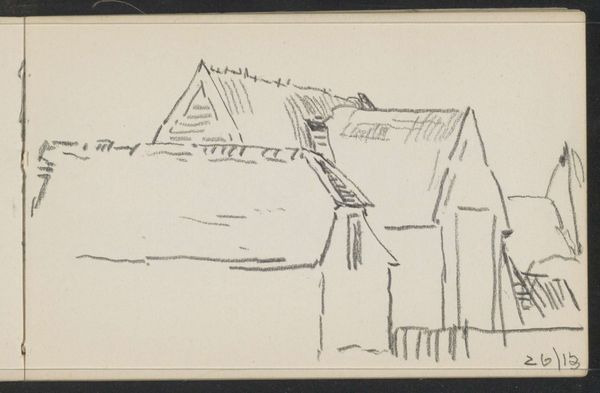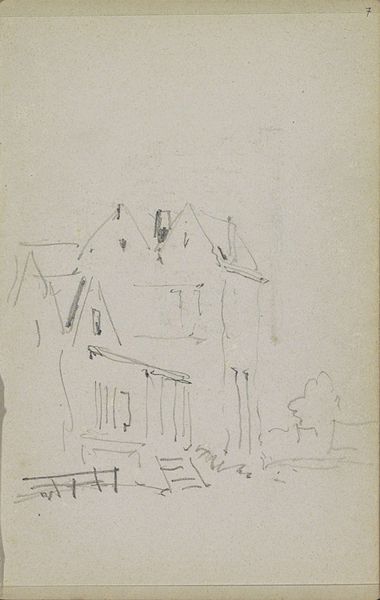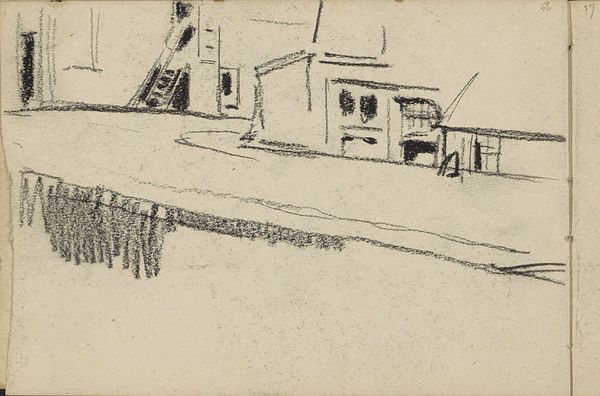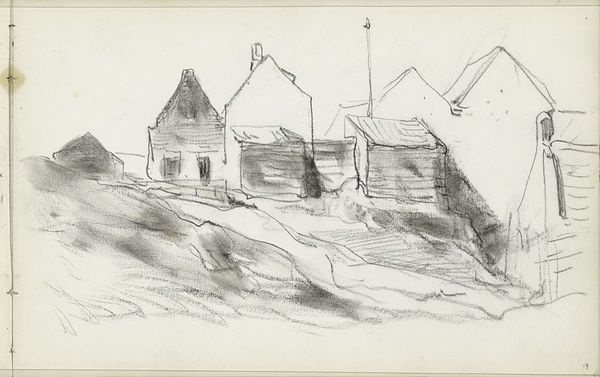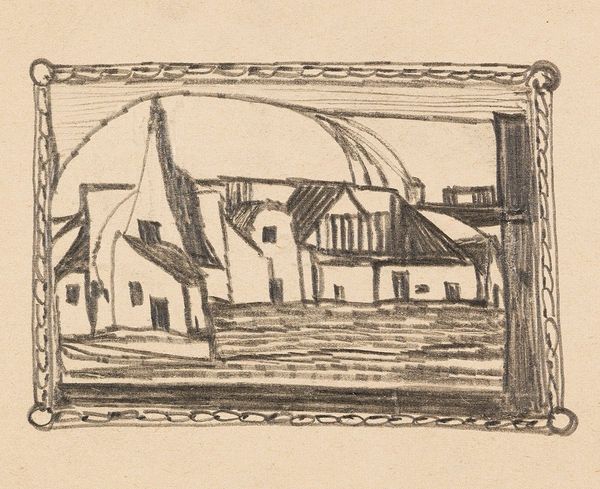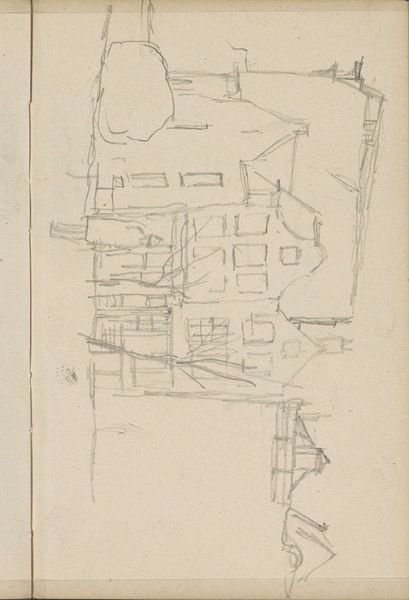
Shipyard in Connecticut (from Sketchbook) 1858 - 1916
0:00
0:00
Dimensions: Sheet: 4 7/8 x 7 7/8 in. (12.4 x 20 cm)
Copyright: Public Domain
Curator: Henry Ward Ranger’s “Shipyard in Connecticut,” likely created sometime between 1858 and 1916, strikes me with its directness. It's an ink drawing, full of movement. Editor: There's a stark, almost melancholy quality to it, don't you think? The angular shapes of the buildings and the thin, scratchy lines create a sense of desolation, despite the presence of figures. Curator: Precisely. Consider how the artist employs a stark contrast, prioritizing linearity over tonal range. The buildings, articulated with simple, direct strokes, dominate the composition, while figures populate the ground but their activity seems quite faint. It evokes a functional realism. Editor: And that rectangle sketched around the scene – what does it do, framing this small shipyard? Perhaps to enclose the workforce in this historical and material condition, where the yard provided occupation but also shaped identities and opportunities? Curator: That rectangle accentuates the drawing's character as a sketch, something preliminary and intimate. The way it doesn't quite align suggests a fleeting observation, captured in the moment. Editor: This fleeting glimpse speaks to the artist’s choice, highlighting everyday life within the grander narrative of the American landscape, in line with the artistic mission of Hudson River School members at that time. The materiality of the yard reflects, perhaps, larger economic structures, mirroring global trends in shipbuilding and commerce during that period. Curator: A pertinent reading, certainly. And the reduction of form directs attention back to the foundational elements: line, shape, contrast. Ranger shows us what is essential about structure and space through these calculated and almost crude marks. Editor: It highlights how the reality of a Connecticut shipyard intersected with global exchange and broader themes. I do find myself wondering about labor conditions then though; it may humanize workers more so than just documenting activity in the periphery. Curator: Absolutely. This artwork, although understated in its approach, encourages active observation. It speaks not just to the artist's method, but, perhaps inadvertently, also echoes to a wider appreciation of our nation's economic foundations. Editor: Indeed. And its simple language creates a connection through its stark forms, resonating well with this space that once reflected and molded America's maritime ventures.
Comments
No comments
Be the first to comment and join the conversation on the ultimate creative platform.
